Ribble compares the disc brake to the rim brake to help you decide which one to go for when it comes to buying your new road bike. While disc brakes are becoming increasingly popular, the traditional rim brake is still a firm favourite. We put them head to head to help you decide which brakes complement your riding style.
What is a Disc Brake?
A disc brake is a braking system used in cycling that includes a flat, circular metal disc (rotor) attached to the wheel hub and a brake calliper mounted near the wheel. When you squeeze the brake on the handlebars, the brake pads inside the calliper press against the rotor, generating friction to slow the bike down or bring it to a complete stop. Disc brakes offer strong, reliable stopping power and perform well in different weather conditions.
What is a Rim Brake?
A rim brake is a bicycle braking system that slows down or stops the bike by applying friction directly to the wheel rims. When you squeeze the brake lever on the handlebars, it pulls cables connected to brake arms, which in turn presses the brake pads against the wheel rims, creating friction. Rim brakes are lightweight, easy to maintain, and effective in dry conditions but can be less effective in wet or muddy conditions compared to disc brakes.
Which is better?
There’s not always a simple, definitive answer: both braking systems have their place in the cycling world. We compare the Endurance SL Disc fitted with a Disc Brake system and the Endurance SL, which has rim brakes fitted, to discuss the pros and cons of each brake type.
Check out our full range of road bikes
Weather Conditions
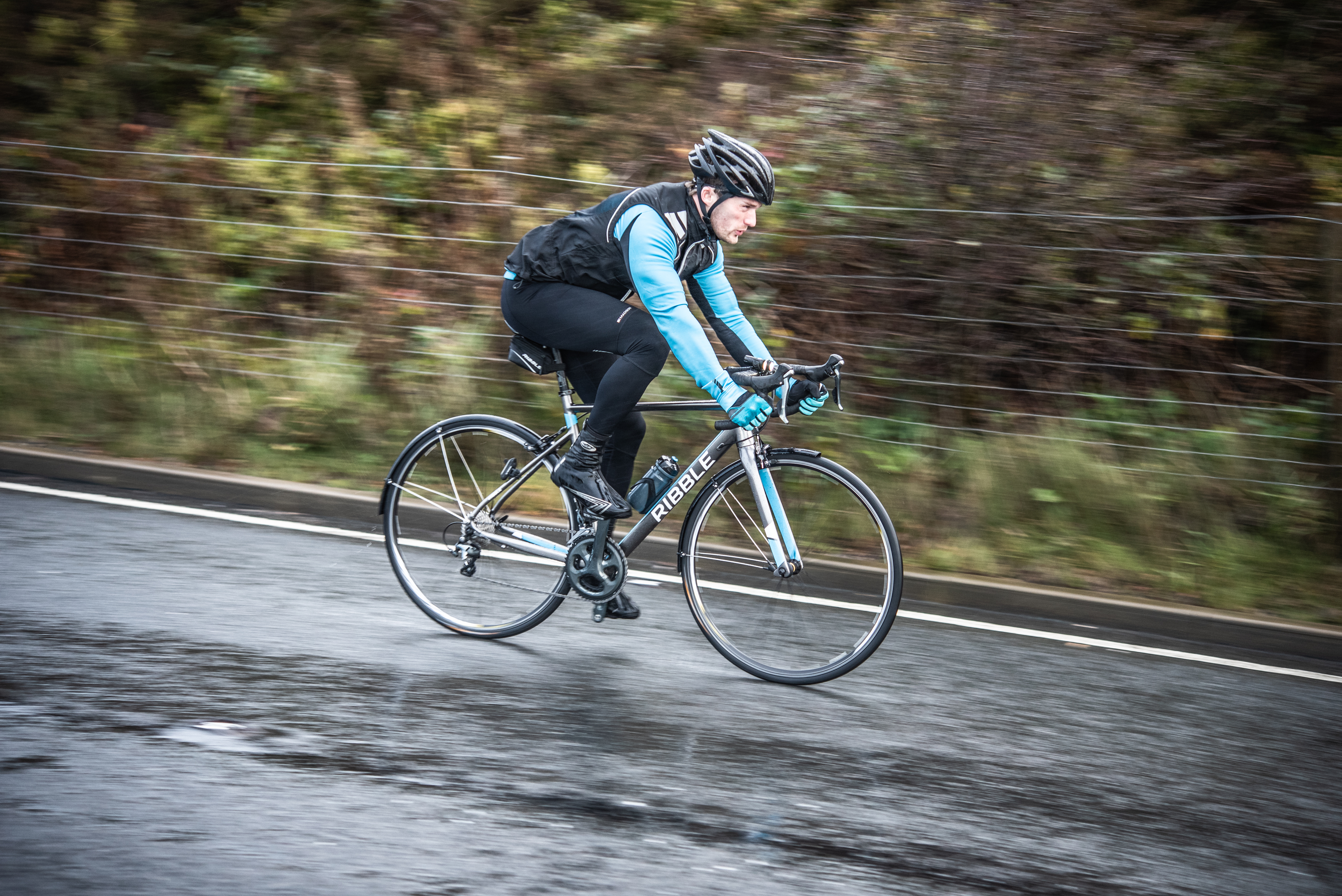
The inevitable wet weather ride! Mudguard capability is a feature across our entire range of bikes (except MTB, of course).
Where wet weather is concerned, there’s no denying that the disc brake will provide a more consistent and responsive stopping force. It also eliminates that awful sound of a gritty wet pad scouring away at your nice shiny wheel rim. That being said, there is something to be said for the simplicity of a cable-actuated brake.
The extra stopping power of disc brakes also means that much less force is required at the lever. Thereby relieving the strain and muscle fatigue when continuously jamming on the lever, particularly on those long descents.
Winner: Disc Brake
Tyre Clearance

Tyre clearance on the Endurance SL is dictated by the brake calliper itself, with most brands being compatible with 28-30mm max.
The disc brake option allows you to run a tyre width up to 32mm (on our Endurance SL Disc) as opposed to 28mm on the rim brake version. This allows you a bigger tyre footprint and the ability to use a much lower tyre pressure for optimum comfort and traction.
Winner: Disc Brake
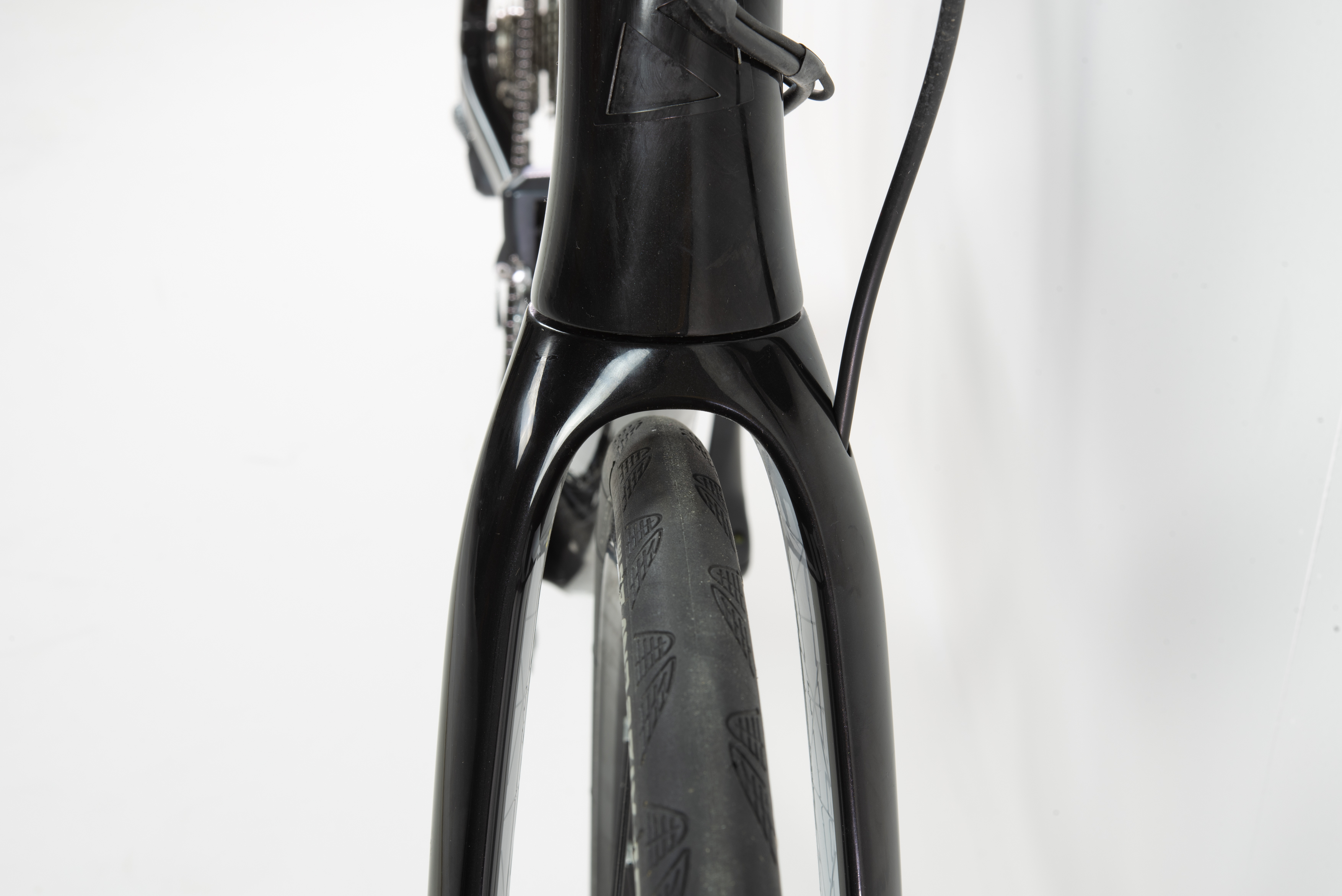
The Endurance SL Disc's extra frame clearance is clear to see.
Reliability and Maintenance
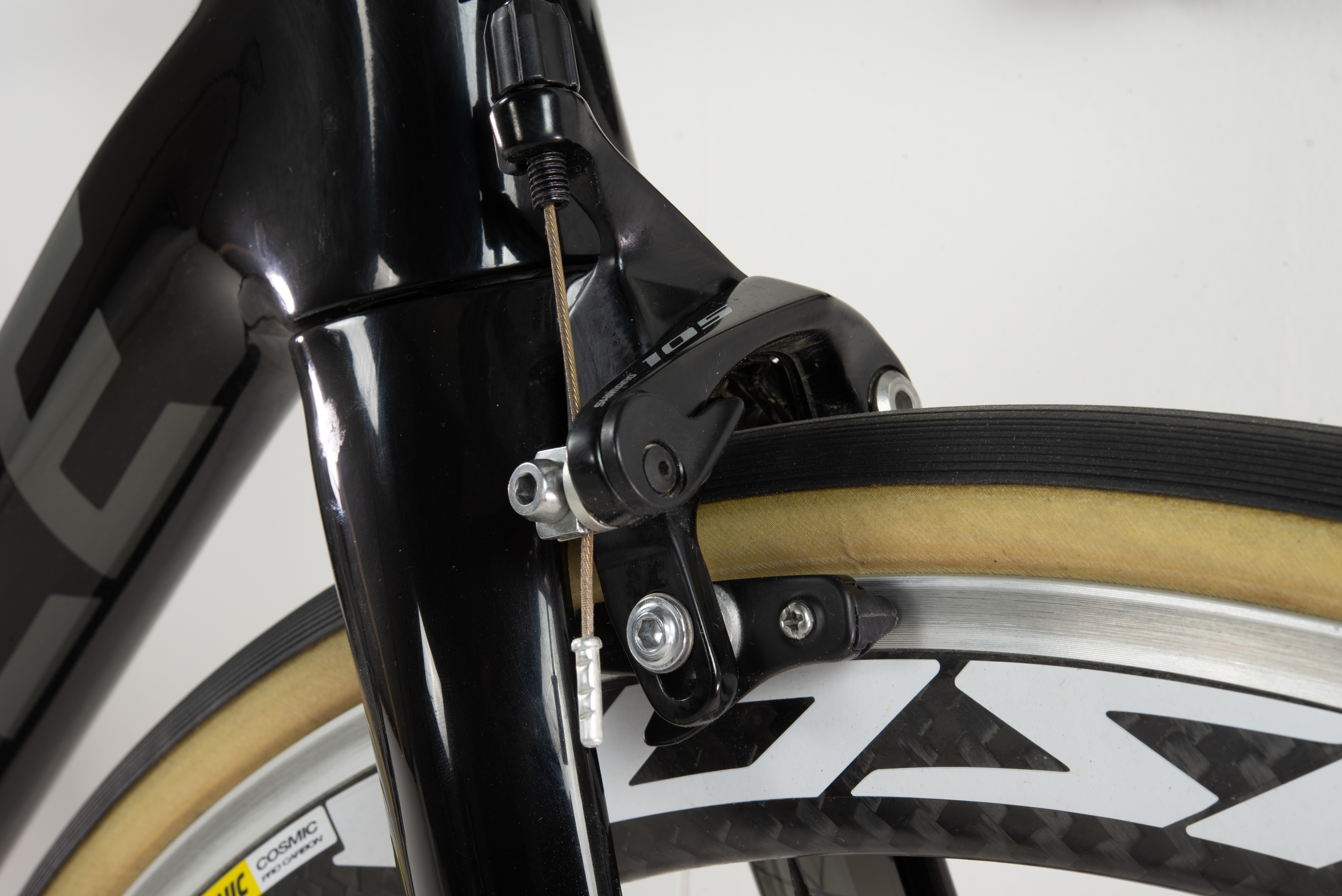
A feature of cable-actuated rim brakes is the easily replaceable brake pads.
There is an admirable simplicity to a traditional cable-actuated rim calliper that will rarely let you down in terms of reliability. If you do encounter a problem, they are much easier to fix by the roadside. Consumables for rim brakes (i.e. brake pads and cables) tend to be a little cheaper, too! However, most fans of disc brakes may argue that they are equally reliable and cheap to maintain but slightly trickier to fix should anything go wrong.
It's also worth mentioning that squeezing the brake lever with the wheels off the bike doesn't cause an issue with your trusty rim brake. But it is definitely something to avoid with a disc brake! Doing so activates the pistons, and you’ll soon find that there’s insufficient clearance for the pads to clear the rotor when you re-insert the wheel. To counteract this, disc brake manufacturers always provide brake calliper spacers with their brakes. Simply pop in the spacer whilst you carry out any maintenance.

To replace disc pads, it’s first necessary to pop out the wheel and ensure that the pistons are pushed back to accept the new pads.
Maintenance will heavily depend on how technically capable you are. Replacement of a rim brake cartridge should be achievable by even the most ham-fisted of riders. It only requires you to loosen a grub screw, slide out the old pad, pop the new one in and tighten the screw back up afterwards (rinse and repeat).
Disc brake pad replacement is a little more involved. After all, you have to remove the wheels to do so. However, it is much the same, apart from a simple tip of using a tyre lever or other non-abrasive tool to push the pistons back before removing the old pads. The pistons self-adjust as the pads wear, meaning the more worn the pad, the closer the piston sits in relation to the rotor.
However, on occasion, the calliper itself may require re-aligning, which is often where many riders come unstuck. Hydraulic brakes differ from rim brakes most in that they will need bleeding instead of simply replacing a set of brake cables. For those who aren’t particularly mechanically minded, this is probably a task best left to the experts.
Winner: Rim Brake
 The Endurance SL & SL Disc in action!
The Endurance SL & SL Disc in action!
Wheels
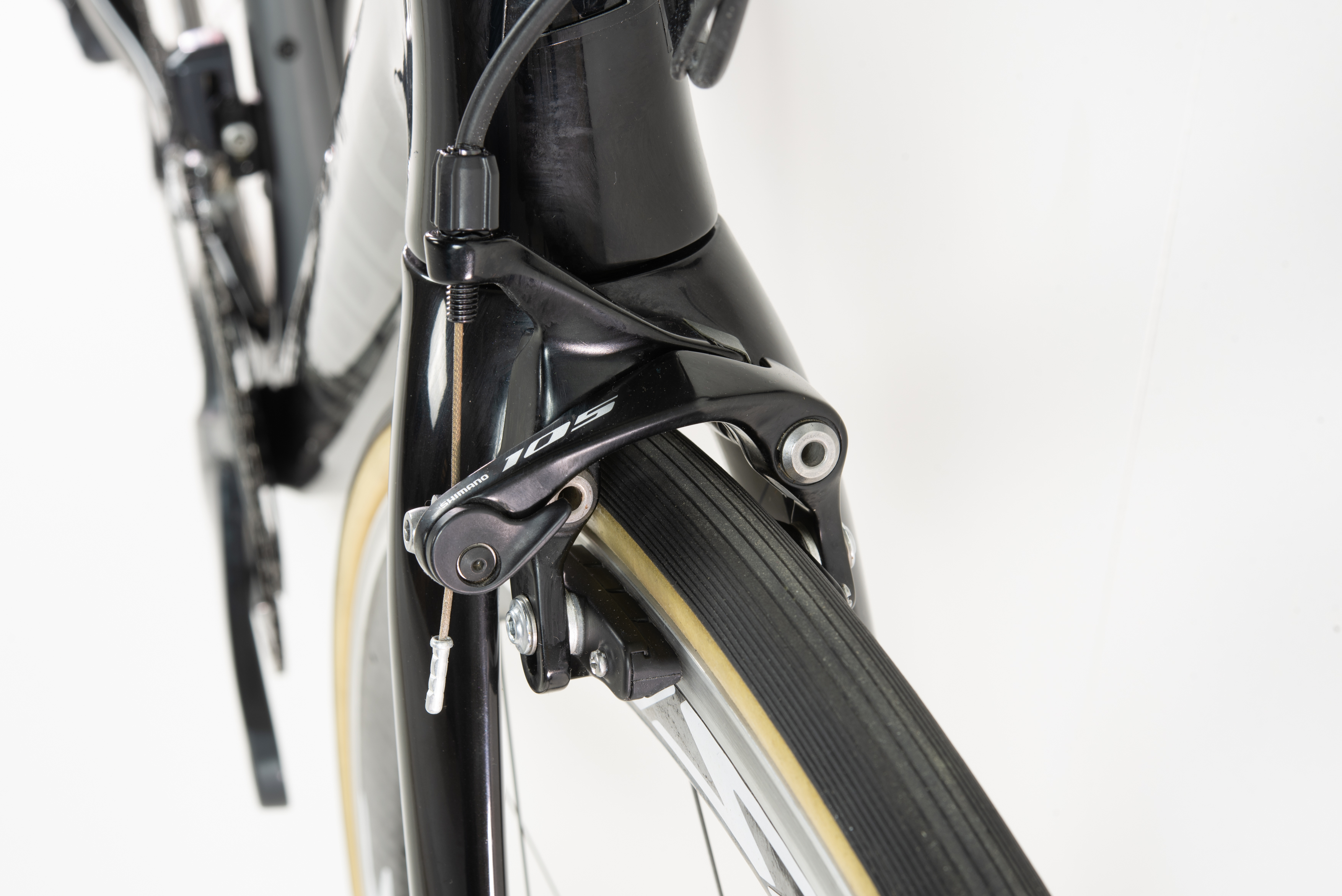
Rim brake compatible wheelsets require a braking surface for the brake pad, disc brake wheels do not.
There are two major features that separate a rim brake-compatible wheelset and disc brake-specific wheels. Namely, the hub axles (see axles section below) and braking surface. Standard wheels have a braking surface, and disc wheels don't, as they don’t need one. Why do we mention this? Well, it’s one of the minor drawbacks of the rim brake.
If you’re the type of rider who rides their bike all year round and in all weather conditions, it's entirely possible that you’ll wear out the wheel rim prematurely (cycle commuters, for instance). Certainly much more quickly than the fair weather cyclists who ride their bikes infrequently.
Winner: Disc Brake
Aesthetics
Flat mount technology and ice-tec rotors have greatly improved aesthetics. The cleaning up of the bridge of the fork and seat-stay junctions on frames has also made for some really tidy lines in the bikes we see these days. Conversely, you may argue that the hub/drop-out area of these bikes now looks a little bit busy.
Disc Brake Bikes tend to have a high-tech look that gives off a modern aesthetic. Without the need for brake callipers on the frame or fork, disc brakes allow for a cleaner, more streamlined frame and minimalist appearance. The rotors and callipers of disc brakes are prominent and add a technical, mechanical visual element to the wheels, showcasing advanced engineering.
On the other hand, rim brake bikes have a more classic and traditional bicycle design. They appear more simplistic and minimal, and the brakes blend seamlessly into the bike’s frame for a more understated appearance. There is no need for additional mounts or reinforcements for callipers on the frame and fork, leading to a smoother, more elegant frame design. Without the presence of disc rotors and larger callipers, the wheels and frame can look less cluttered, highlighting the bike's lines and details.
Winner: Disc Brake
Axles

A standard quick-release with a cam lever system
A big factor, and one that is most often overlooked, is how both types of braking systems make use of different axle designs. The traditional tried and tested method of securing the wheel on a traditional road bike with rim brakes is the humble quick-release skewer. The downside to this particular design is wheel flex. No matter how tight the skewer is, if you grab the tyre, you will always be able to flex the wheel from side to side. This can result in the rim making contact with the brake pads when under heavy load.

A bolt thru-axle with Allen key head, requiring an Allen key to be taken on each ride. Though you can buy axles with a cam-lever for easier wheel removal.
All modern disc brake-equipped bikes employ the bolt-thru-axle system. The axle slides through the wheel and screws directly into the frame’s dropouts. Some versions require an Allen key to tighten and remove them. Others, however, use a cam lever design in much the same way as a quick-release skewer. The thru-axle provides additional wheel security by stiffening up the junction between the wheel and frame.
If you grab the tyre of a disc bike and waggle the wheel, you will notice little to no movement. Stiffening up the wheel/frame junctions leads to better steering control and superior bike handling, particularly when high-speed cornering under full load.
Winner: Disc Brake
Cost
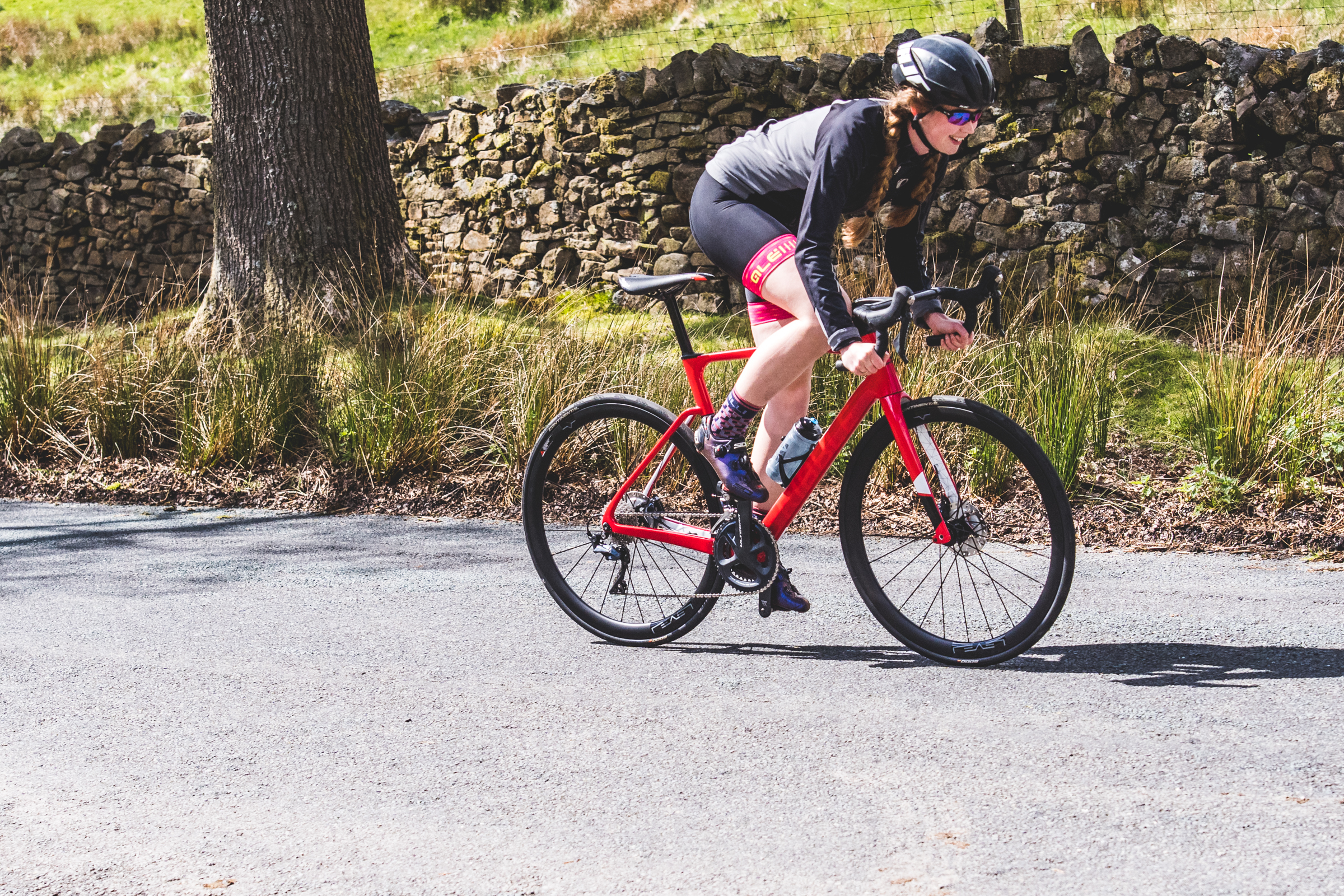
An Endurance SL Disc is put through its paces during vigorous testing
There’s no getting around the fact that a disc brake bike will cost slightly more than its rim brake equivalent. This is due to a number of factors, not least of which is that it costs more to produce a disc frame. Due to the braking forces being applied on the non-drive side of the bike. This is contrary to the braking forces applied to the centre of the rim brake bike via a traditional calliper.
Then there’s the cost of the individual braking components themselves, of course. Their increased complexity means they are more expensive to manufacture, especially in the preferred and recommended hydraulic format. As you can imagine, there is an awful lot going on inside an 11-speed hydraulic shifter lever.
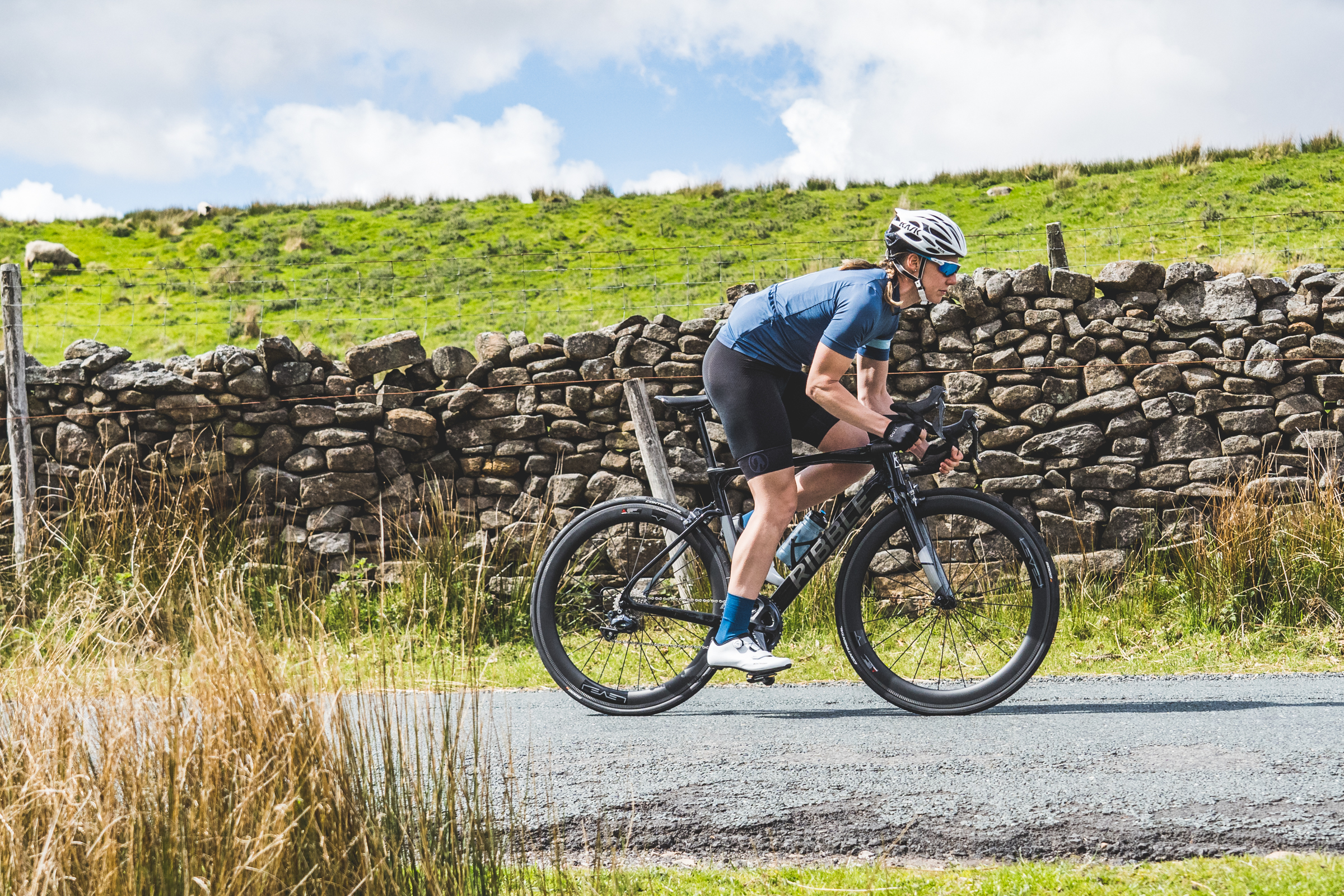
The Endurance SL is put through its paces
Winner: Rim Brake
The Decider: Disc Brake vs. Rim Brake
The scores are in, and it’s quite close. It’s more a case of considering your individual needs:
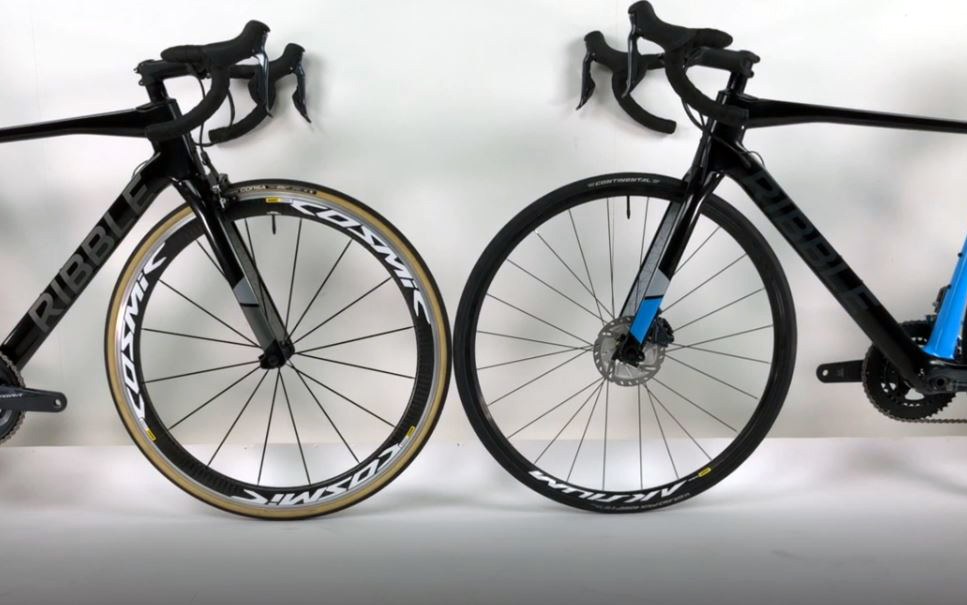
- Is this going to be your best weather show-and-shine bike because you have a winter bike as well? Then go rim brake if it’s never likely to see wet or rough weather, as you will still receive more than enough braking power performance on your fair-weather dry rides.
- Is this going to be your one and only bike, and you'll be out no matter what the weather is? Then go disc - you'll enjoy more consistent braking regardless of conditions, and you'll get more longevity out of your wheels as you won’t be wearing out your rims in those adverse conditions.
- Is the weight of your bike your #1 priority? Then go for rims - they're lighter!
- Do you want the best bike you can possibly get, and your budget allows it? A disc brake bike will be your best bet; it will always offer optimal braking performance.
This is probably the appropriate time to raise one important caveat. Due to the decreased demand for rim-brake bikes, the cycling industry is moving almost exclusively to offering disc-brake bikes. As disc-brake bikes continue to evolve, the minimal advantages offered by the rim-brake bike are outweighed by the superior braking control of disc brakes.
New to cycling? Then pop into one of our showrooms to try both and see which of the Endurance or other Ribble models you prefer!
Check out our full range of Ribble bikes
[Design your dream Ribble bike with CusomColour in BikeBuilder. Find out how to add your unique design (https://www.ribblecycles.co.uk/blog/ribble-customcolour/).
Need help with selecting the right gears? Check out our gearing explained guide.
If you are in the market for a drop-bar bike, which should you choose? We compare all-road bikes, gravel bikes, and endurance bikes to help you decide.
Tags
- | guides
- | carbon bikes
- | cycling
- | brake
